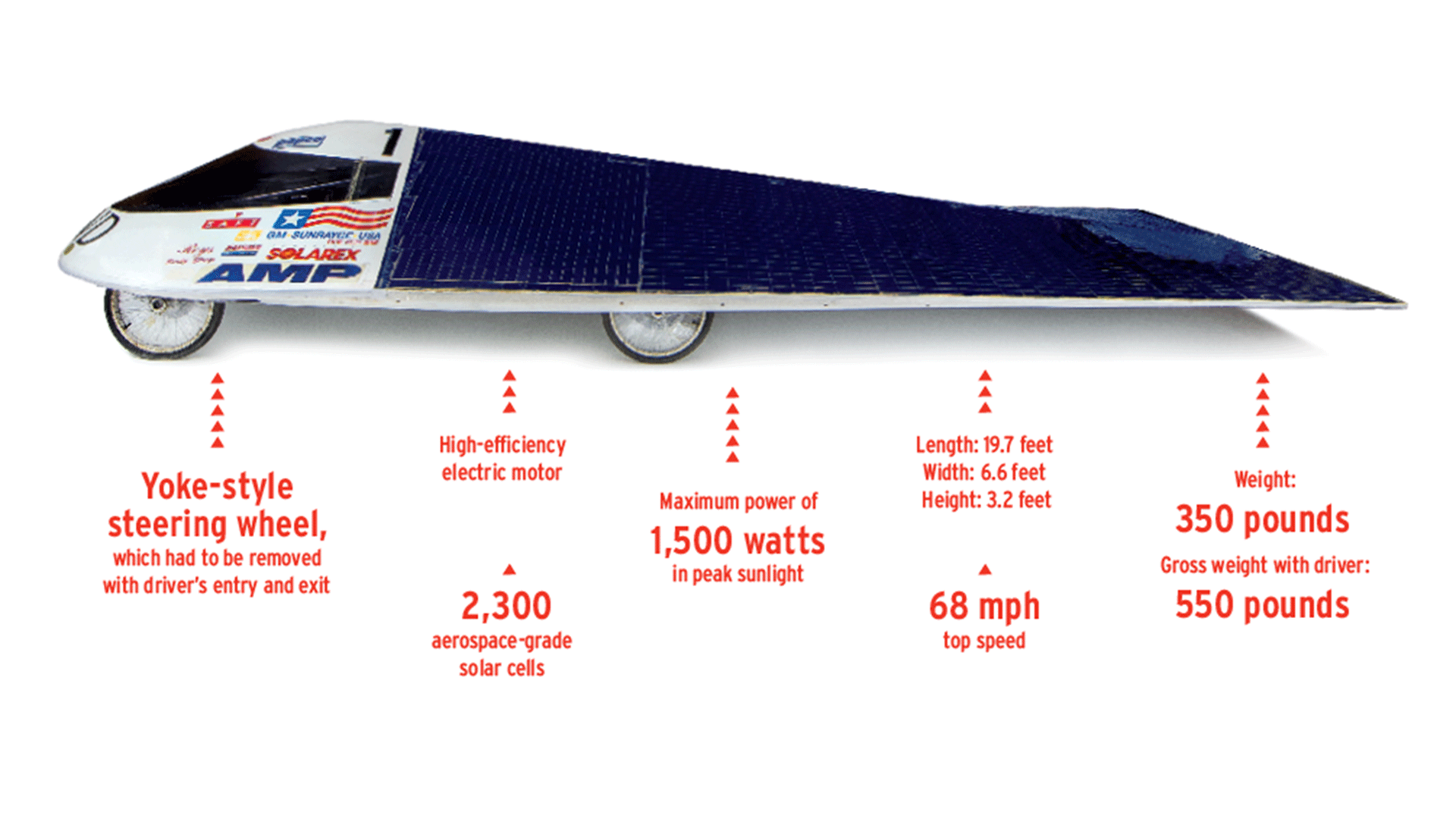- September 17, 2019
- By Sala Levin ’10
Nearly 30 years ago, the car of the future looked like a cross between a horseshoe crab, a retro flying saucer and an airplane wing. And it was (gently) gunning for the lead in a low-speed yet high-tech cross-country race.
 This was the Pride of Maryland, a vehicle designed and built by some 60 UMD engineering students to compete in the 1990 GM Sunrayce USA, a challenge to university students to create and race a solar-powered car. Yet that 1,644-mile adventure was only the start of a wild decades-long, continent-crossing journey that may finally end soon, when the car parks at a permanent home on campus.
This was the Pride of Maryland, a vehicle designed and built by some 60 UMD engineering students to compete in the 1990 GM Sunrayce USA, a challenge to university students to create and race a solar-powered car. Yet that 1,644-mile adventure was only the start of a wild decades-long, continent-crossing journey that may finally end soon, when the car parks at a permanent home on campus.
Building the car “seemed like it went on 24 hours a day,” said Maureen Williams ’91. “It was a nonstop process.”
The team, led by mechanical engineering Professor David Holloway, developed a lightweight, aerodynamic vehicle, then tested it in the university’s Glenn L. Martin Wind Tunnel. The result was sleek and tapered, with solar panels where the horseshoe crab’s tail would be, and measured 20 feet long, 6 feet wide and 3 feet tall. The car could reach upwards of 40 mph on sunlight alone, and more by using the car’s battery.
The team qualified for the race by taking the car for a spin on the Daytona International Speedway; once it made the 32-car cut, the students set out from Orlando on July 9, 1990. From there, the team drove through Alabama, Tennessee, Kentucky, Indiana, Ohio and finished in Michigan.
“GM had made a big push to make sure everybody knew the cars were coming, so every stop we made … there were hundreds and hundreds of people, if not thousands,” said Williams.
Stephen Brady ’89 recalls one day when the team was arriving in Indianapolis amid a crush of commuters. “We used our Washington, D.C., rush-hour skills to get ahead and ended up coming in first place.”
The team placed a respectable third in the Sunrayce and earned a place in another race in Australia, where the car finished seventh. After that, the Pride competed in Japan, then retired from its racing days, emerging briefly to appear in the 1993 inaugural parade for President Bill Clinton.
The car spent some time in an automotive museum in Tennessee, then sat in storage at a campus engineering lab until 2002, when the space was cleared out and the team members returned to rescue and rehab it. Since then, the Pride has led the unsettled life of a vagabond. It stayed for a while in the engineering manufacturing building until a renovation led to its discovery amid construction debris. Then it parked at Brady’s parents’ garage in Gaithersburg before landing in 2009 at the Baltimore Museum of Industry, where it hung from the ceiling.
Returning to the museum in 2018, Brady was surprised to find the car had vanished from its spot. He learned that it was in a Baltimore Avenue building owned by the engineering department; again, he took the car back to his parents’ garage to spruce it up. In the spring, the Pride was featured at Maryland Day and will soon live in one of the Clark School’s buildings.
“We hope that those who see it will be inspired by the innovative design and engineering that went into building this car and build on the success of one of the first competition teams from the department and the college,” said Bala Balachandran, Minta Martin Professor and chair of the mechanical engineering department.
Williams also hopes the Pride will have a long life on campus. “We won’t let this thing die,” she said.

Topics
Campus & Community